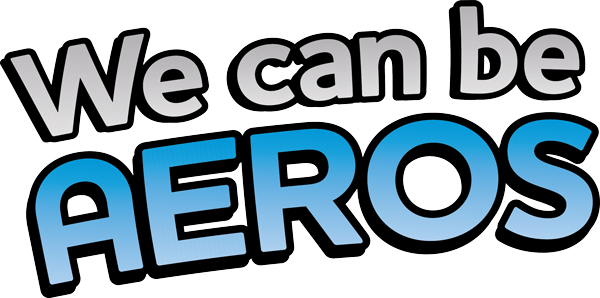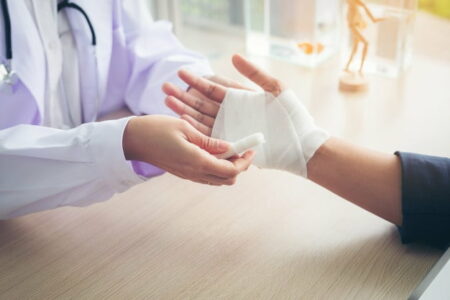You never know when an emergency could strike. While your first step to handling any emergency situation should be to call 000, knowing how to perform basic first aid can mean the difference between life and death.
No matter what industry you’re in, basic knowledge of first aid is an essential life skill that can help get you through a minor or major crisis. Here’s a primer on how to perform basic first aid.
Cardiopulmonary Resuscitation (CPR)
Cardiopulmonary Resuscitation (CPR) keeps oxygen and blood flowing throughout the body when the heart is not pumping at its normal pace.
Whether you’re a parent or someone responsible for the safety of children or adults, knowing how to perform CPR is a crucial skill to have.
If you’re the first responder to a situation where someone isn’t breathing, it may be necessary to move them carefully onto their back, while protecting their neck, so that they can receive CPR.

If you are untrained in CPR, and you’re interested in knowing how to perform basic CPR, visit the Australian Resuscitation Council’s guidelines for CPR.
Remember to call 000 prior to administering CPR.
Even if you have proper CPR training, it’s imperative that you still contact Triple Zero before you do anything else. If you’re able to administer CPR, begin by applying a steady rate of 100 to 120 compressions every 60 seconds. After every 30 compressions, give two rescue breaths.

Continue CPR until paramedics arrive and are ready to take over.
If you’re looking to start your CPR training today, contact Aero to find your nearest first aid trainer. We can help you find an accredited training provider who will be able to guide you and your staff through the proper procedural training, as well as provide you with suitable signage and first aid supplies.
Back Blows and Chest Thrusts
If you see someone choking on food, the first response many people have is to perform what is known as the ‘Heimlich Manoeuvre’. Turns out, this may not be the best approach to save a choking victim.
According to the ARC (Australian Resuscitation Council), there’s considerable evidence that abdominal thrusts can cause harm to a choking victim. Instead, they advise the practice of up to 5 back blows, which if not successful should be followed by a ‘chest thrust’.
-
Call 000 immediately. Choking is a life-threatening emergency, so have someone call emergency services (Triple Zero) or do it yourself if you are alone.
-
Give up to 5 back blows: Stand to the side and slightly behind the person and use the heel of your hand to deliver firm back blows between their shoulder blades. Check after each blow to see if the obstruction is dislodged. The goal is to clear the airway with as few blows as possible, not necessarily to use all five.
-
If still choking, give up to 5 chest thrusts: Stand behind the person (or kneel behind, if they are lying down). Support their upper body with one hand and use your other hand to deliver chest thrusts at the same point on the sternum where you would perform CPR compressions – you are trying to create an artificial cough to expel the object. For an adult or child, chest thrusts can be done with two hands interlocked (as in CPR) if necessary. For an infant under 1 year, use two fingers for chest thrusts while the baby is laid face-up along your forearm or thigh.
-
Alternate back blows and chest thrusts: If the airway is still blocked, continue to alternate up to 5 back blows then 5 chest thrusts in rapid succession until the object comes out.
-
If the person becomes unconscious: Lower them to the ground gently and begin CPR immediately. Start with chest compressions and follow the normal CPR steps (call 000 if not already called) until help arrives.
Learn more here about back blows and chest thrusts here.
Burn Treatment
Whether it’s sunburn, scalds from hot water in the home or chemical burns, burns are one of the most common household injuries. Understanding burn treatment is a crucial component in knowing how to perform basic first aid.
The first step to treating a burn is to identify whether it is a major burn, which will require emergency professional treatment, or a minor burn, which you can treat at home using the right first aid materials.

For information on how to identify a burn, read our guide to identifying burns.
Luckily, you can treat minor burns at home using Aero’s burn treatment products.
- If the burn symptoms appear to be minor, you apply Aero’s Burn Gel Dressing. You can leave this gel on the burn for up to two hours.
- To ensure that the burn heals properly, consider dressing the burn using Aero’s Waterproof Film Dressing. You can leave this dressing in place for up to 7 days.
Wound Treatment
While minor open wounds may not require urgent medical attention, it’s important to address them sooner rather than later. If you do get an abrasion or laceration, it’s best you know how to deal with it properly.
Note: In the case of a serious accident, you should seek medical attention right away by calling 000.
Before you dress your wound with a gauze or bandage, it’s important to make sure that your hands are clean. Once you have sanitised your hands, gently rinse the wound with clean water and remove any fragments of dirt with tweezers that you’ve cleaned with alcohol. Then, softly pat dry the surrounding skin with a clean cloth or towel. See a doctor if you can’t remove all the debris.
After you’ve disinfected the wound, apply direct pressure, and elevate the wound to control bleeding and swelling. To bandage the wound, try using Aero’s non-stick dressing. Not only will this keep the wound clean, but it’ll ensure that it doesn’t end up infected.
Redressing the wound daily with clean bandages will also help with the healing process.
Whether you’re helping a family member, a colleague or yourself with a common injury or emergency, we want to arm you with the right tools so you can Be An Aero!



